43 nutrition labels for milk
Milk 101: Nutrition Facts and Health Effects - Healthline Milk is an excellent source of many vitamins and minerals, including vitamin B12, calcium, riboflavin, and phosphorus. It's often fortified with other vitamins, especially vitamin D. Milk hormones... PDF Milk Labels Now pass out What's on the Label? handout. Tell students that food labels give them important information about the nutritional value of the food. Discuss the following information with the students: • Ask students to look for the words "Serving Size" on the labels. In the case of milk, the serving size is 8 fluid ounces - 1 cup.
Milk, whole, 3.25% milkfat Nutrition Facts & Calories NUTRITION INFORMATION Amounts per 1 cup (244g) Footnotes for Milk, whole, 3.25% milkfat Source: Nutrient data for this listing was provided by USDA SR-21. Each " ~ " indicates a missing or...
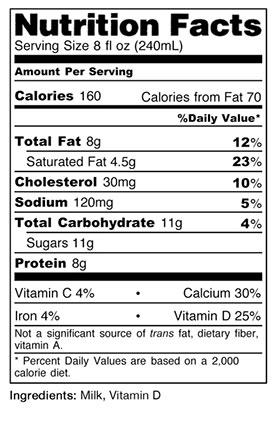
Nutrition labels for milk
Milk: Health Benefits, Nutrition Facts, and More - WebMD Nov 17, 2020 — Calories: 149; Protein: 8 grams; Fat: 8 grams; Carbohydrates: 12 grams; Fiber: 0 grams; Sugar: 12 grams. One cup of 2% milk has fewer ... Animal Diet Claims on Food Labels - Agricultural Literacy Animal diet claims on food product labels refer to what type of feed an animal eats during its lifetime, except for milk fed prior to weaning. The Food Safety Inspection Service of the United States Department of Agriculture (USDA) oversees these claims. Grass Fed or 100% Grass Fed Understanding Food Labels - Go Dairy Free This handy quick guide includes the essentials to understanding food labels for dairy-free diets. Click on any of the links or images below to get information on understanding food allergen labeling (including how to spot milk when it isn't clearly noted), foods and all types of other products where dairy may hide (yes, even in paint and ...
Nutrition labels for milk. Milk Labels - Fast & Easy | SheetLabels.com® Blank Milk Labels. Printed or Blank Dairy Labels. Labels for dairy products including cheese, ice cream, sour cream or cottage cheese need to have the right amount of room to list nutritional facts, expiration dates, as well as other crucial nutritional information pertinent to customer consumption. We have what you need, take a look today! The Secrets to Decoding Food Labels for Dairy-Free Living Milk-Free - It's typically equivalent to dairy-free labels, and should mean the product is made without any milk-based (dairy) ingredients. Lactose-Free - Lactose-free just means the product is free of milk sugar, not of all milk-based ingredients. However, some dairy-free products use this label instead of dairy-free. We're not sure why. Food Labels | Nutrition.gov What's New with the Nutrition Facts Label. HHS, Food and Drug Administration. The U.S. Food and Drug Administration (FDA) has updated the Nutrition Facts label on packaged foods and beverages with a fresh design that will make it easier for you to make informed food choices that contribute to lifelong healthy eating habits. What's in a Name? The Colors of Milk Labels & What They Mean - Live Healthy Most nutrition labels on milk include calorie, fat, protein and calcium content, and the milk is also separated by the color of the lid. This makes it easier for you to identify which milk you want...
24 Types of Milk and Their Nutritional Values - Nutrition Advance That said, it can also work in drinks like coffee, though it has a bold and strong flavor of its own. Coconut milk has a high fat content and provides minimal protein. Per 244-gram cup, coconut milk has these nutritional values ( 25 ): Calories: 231 kcal. Carbohydrate: 7.1g. Sugars: 6.1g. Fat: 5.08g. Nutrition Label For Milk Pictures, Images and Stock Photos Young woman checking milk's labeling in supermarket Diet icons Set of ingredient warning label icons. Common allergens (gluten, lactose, soy, corn and more), sugar and trans fat, vegetarian and organic symbols. Milk Carton with custom design Milk Bottle with custom design label Mature Woman Groceries Shopping. The Co-op issues major milk cartons change to help with food waste The Co-op hopes that the introduction of their new label will encourage customers to store the milk in their freezer in a bid to help cut back on 70,000 tonnes of milk wasted annually. Milk Food Labels_questionsFinal. Luana Ferreira.docx - BIOL... For people who are lactose intolerant, milk with added lactase is more digestible. Compare the total carbohydrate (polysaccharides + fiber+ sugars) and sugar (disaccharides and monosaccharides) content of 2% Lactaid vs. 2% regular milk.Are they the same or different?
Food Label Guide: Dairy - FoodPrint Food Label Guide: Dairy When shopping for milk and other dairy products, you've probably encountered labels like "Organic" and "Grassfed," and wondered what they mean and if they're trustworthy. It is possible to find dairy products that are better for you, better for cows and better for the environment. Milk Food Label Infographic | U.S. Dairy Milk Food Label Infographic PDF July 28, 2017 While the nutrients in milk, cheese and yogurt aren't changing, the Food and Drug Administration (FDA) is updating how foods, including milk, must be labeled. Milk Nutrition Facts and Health Benefits - Verywell Fit Milk is a good source of protein, with 8 grams per cup. Milk proteins contain all nine essential amino acids that humans need. Milk has 82% casein protein and 18% whey protein. These separate when milk coagulates, as is done to make cheese. The New Milk Nutrition Label | Milk Life Its food label will list added sugar as 0 grams and 0% DV. Flavored milk, like chocolate milk, contains some added sugar in addition to its naturally-occurring ...
How To Read Food and Beverage Labels | National Institute on Aging Most older adults exceed the recommended limits for saturated fats, sodium, and added sugars. Compare and choose foods to get less than 100% DV of these each day, making sure to adjust for how many calories are in your diet. Additionally, many older adults do not get the recommended amounts of dietary fiber, vitamin D, calcium, and potassium.
Food Labels: Fat & Cholesterol | Home & Garden Information Center The 2015 Dietary Guidelines for Americans recommends the following intakes of fat and cholesterol every day: total fat—20 to 35% of calories, depending on age and gender (65 grams for the 2,000-calorie intake level used in the Daily Value)*. saturated fat—less than 10% of calories**. trans fat— keep as low as possible.
Free Nutrition Label Maker - Create and Download Nutrition Fact Labels Notice: The FDA recently finalized changes for a new nutrition fact label format that will be required starting January 1, 2020. The new label format has been added to our Nutrition Label Generator. To use, please select the "New (2016)" option in step 1 below. Learn more about the changes to the nutrition fact label format.
How to Read Food Labels Without Being Tricked - Healthline The product may contain very little whole grains. Check the ingredients list — if whole grains aren't in the first three ingredients, the amount is negligible. Fortified or enriched. This ...
Sneaky Disguises for Milk on a Food Label - One Green Planet Acidophilus Milk Butter (natural or artificial) Buttermilk or powder Casein & caseinates Ammonium caseinate alcium caseinate Magnesium caseinate Potassium caseinate Sodium caseinate Hydrolyzed...
How to Read Dairy Food Labels for Milk, Cheese, and More Below are some of the common voluntary claims. Interactive Dairy Label Click/tap for details about label claims. Dairy Food Label Claims Calcium Builds Strong Bones Contains Omega-3s Fats Grades Grass-Fed Humane/Humanely Raised Lactose-Free No Grain/Non-Grain Fed Non-Dairy Pasteurization Claims Pasture-Raised Raw rbGH Free or rbST Free
How to Read a Food Label - FoodAllergy.org In the ingredient list, using the allergen's common name. Using the word "Contains" followed by the name of the major food allergen—for example, "Contains milk, wheat.". In the ingredient list in parentheses, when the ingredient is a less common form of the allergen—for example, "albumin (egg).". With tree nuts, fish and ...
How to Understand and Use the Nutrition Facts Label | FDA Dietary fiber, vitamin D, calcium, iron ad potassium are nutrients on the label that Americans generally do not get the recommended amount of. They are identified as nutrients to get more of....

Chocolate milk benefits, misleading warning labels, unrealistic TV expectations and protecting ...
Milk Nutrition Facts: How 1%, 2%, Skim, and Whole Milk Differ - GoodRx Cow's milk is a nutrient-dense beverage that contains many essential vitamins and minerals, including calcium, phosphorus, and vitamin D. The descriptions listed on the label (whole, skim, 1%, 2%) refer to the milk's fat content by weight. The best type of milk for you depends on your dietary needs and goals. Eva-Katalin/E+ via Getty Images.
The New Nutrition Facts Panel - Drink-Milk.com Milk's Nutrition Facts Label The serving size (Reference Amount Customarily Consumed) for milk hasn't changed: it's still 8 fluid oz (240 ml). While people have always been able to use the ingredient list to see if sugar was added to the milk, now the label will have the gram amount and the %DV for Added Sugars.
Food Labeling & Nutrition | FDA Food labeling is required for most prepared foods, such as breads, cereals, canned and frozen foods, snacks, desserts, drinks, etc. Nutrition labeling for raw produce (fruits and vegetables) and...
Understanding Food Labels - Go Dairy Free This handy quick guide includes the essentials to understanding food labels for dairy-free diets. Click on any of the links or images below to get information on understanding food allergen labeling (including how to spot milk when it isn't clearly noted), foods and all types of other products where dairy may hide (yes, even in paint and ...
Animal Diet Claims on Food Labels - Agricultural Literacy Animal diet claims on food product labels refer to what type of feed an animal eats during its lifetime, except for milk fed prior to weaning. The Food Safety Inspection Service of the United States Department of Agriculture (USDA) oversees these claims. Grass Fed or 100% Grass Fed
Milk: Health Benefits, Nutrition Facts, and More - WebMD Nov 17, 2020 — Calories: 149; Protein: 8 grams; Fat: 8 grams; Carbohydrates: 12 grams; Fiber: 0 grams; Sugar: 12 grams. One cup of 2% milk has fewer ...

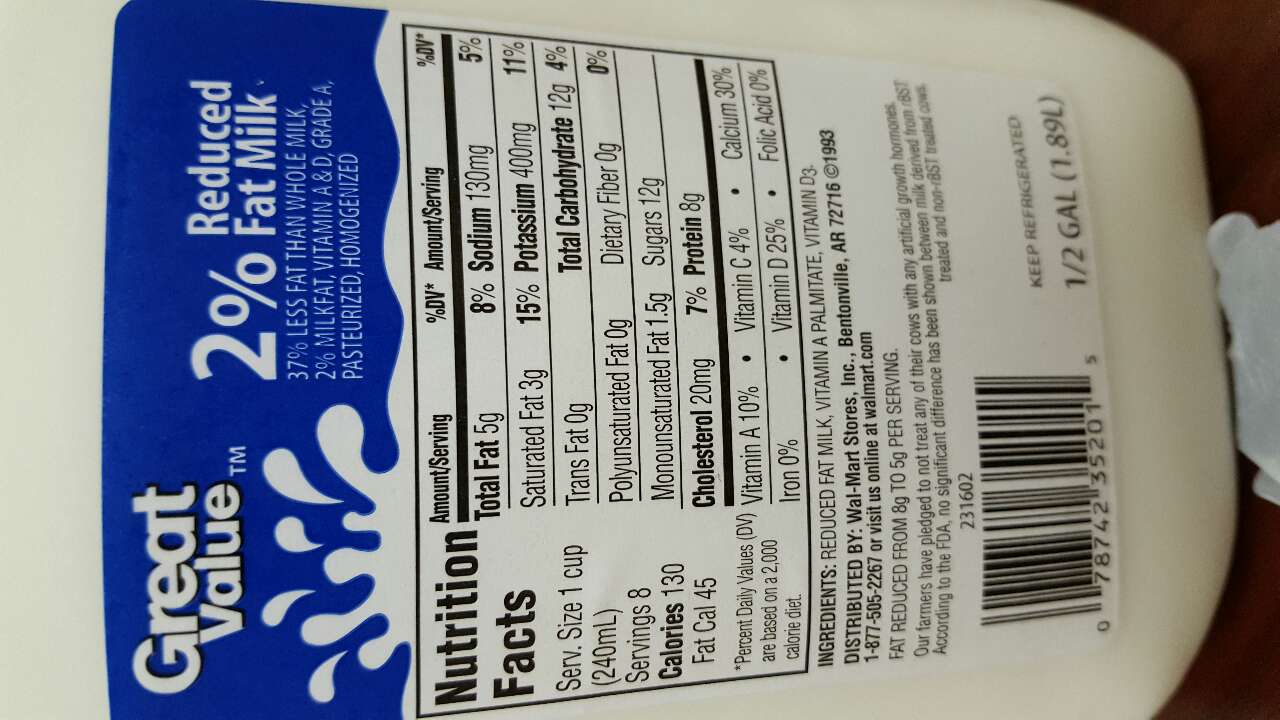




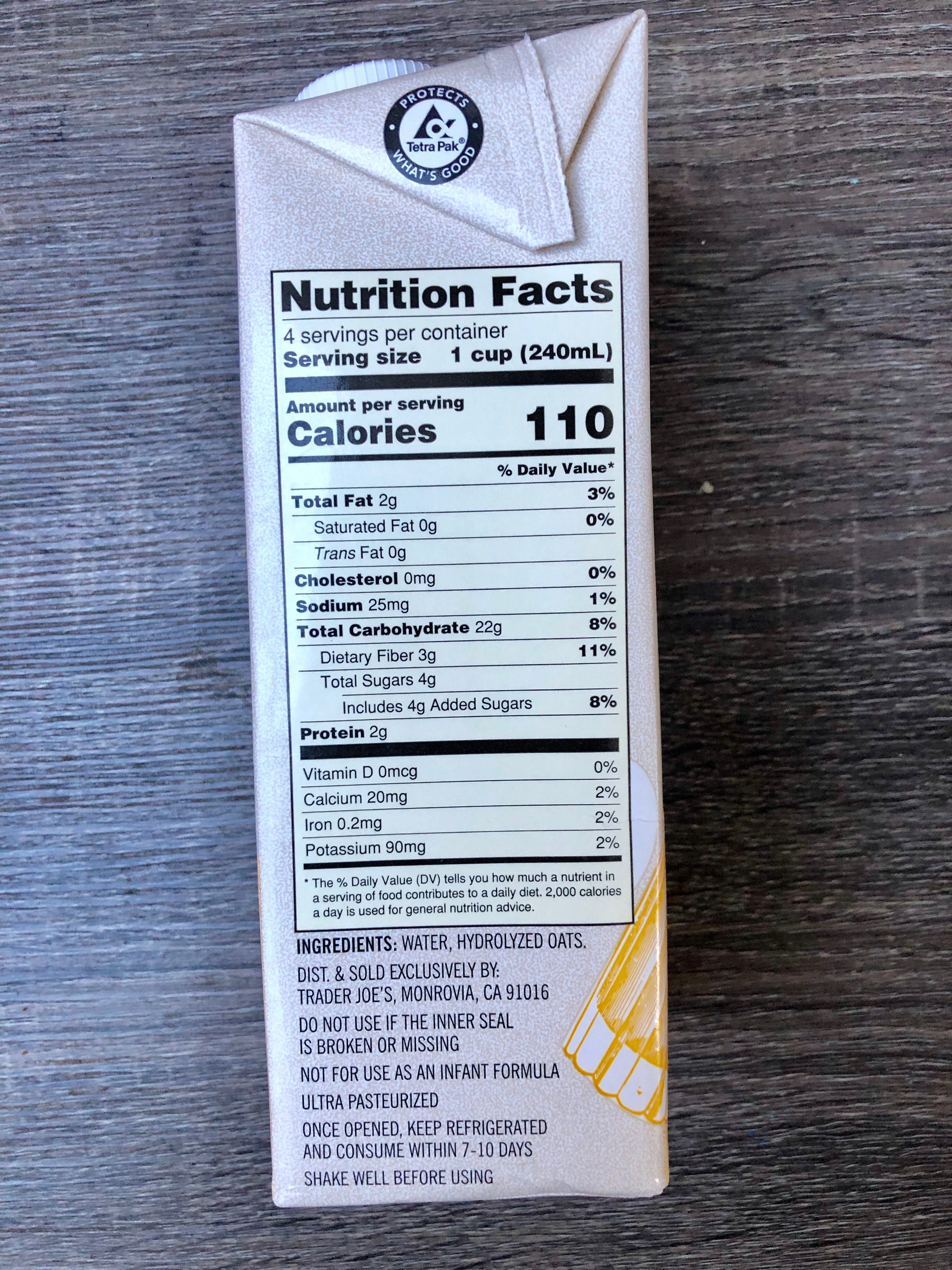
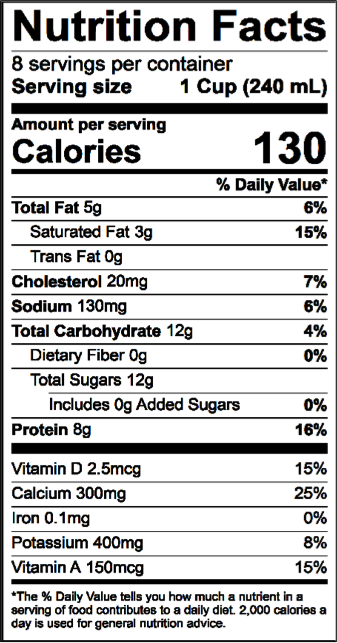
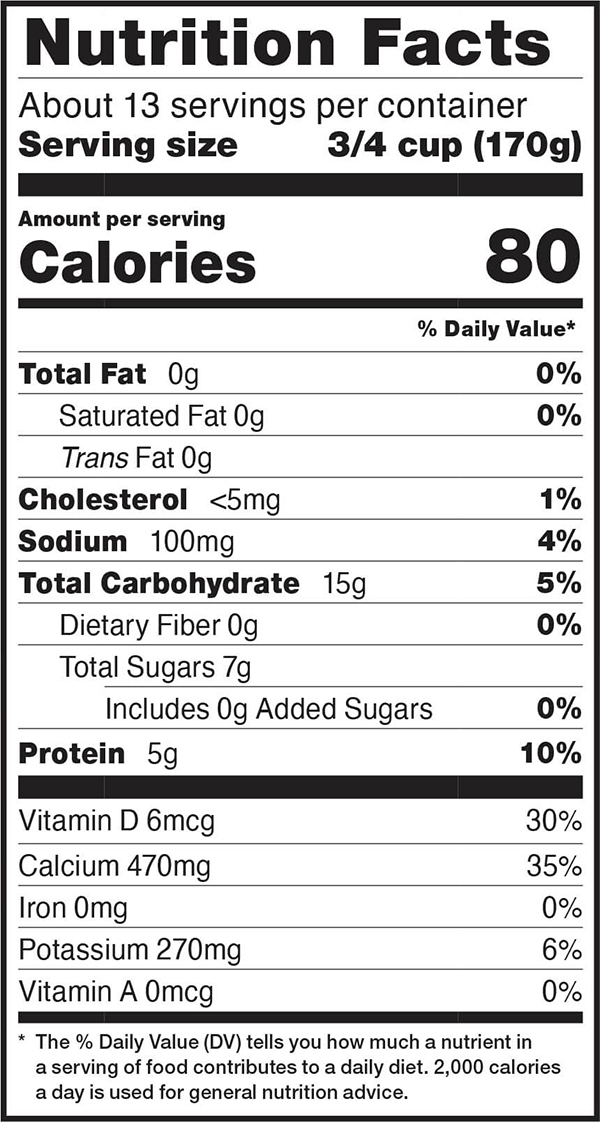



Post a Comment for "43 nutrition labels for milk"